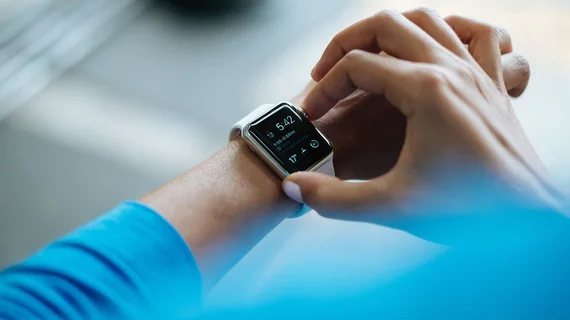The global wearable medical devices market is expected to surpass $29 billion by 2026, according to a report from Transparency Market Research (TMR), expanding at a projected compound annual growth rate (CAGR) of more than 17% over the next seven years.
The rapid uptake of wearable healthcare tech has been driven by an increasing population of diabetics and wellness enthusiasts interested in tracking their glucose, blood pressure and heart health, the report stated. TMR said the market was valued at around $6.8 billion in 2017, but expansion of the healthcare industry, government initiatives, rising costs and a growing roster of FDA-approved devices are fueling the use of wearables.
North America and Europe are expected to account for a dominant share of the global market between 2018 and 2026, according to the report, in large part because there are so many influential innovators in those regions and the public is more receptive to technological advancements. TMR predicted growth would be slowest in Latin America, the Middle East, Africa and the Asia Pacific, though emerging economies and developing infrastructure in places like China could drive local markets at a CAGR of 18.8%.
Countries in the Asia Pacific, including China, Japan and India, also have large diabetic populations. Studies have found people in Asia are at a higher risk of developing type 2 diabetes, and the diabetic population in the region is expected to increase in the next few decades.
TMR’s report suggests a big part of wearable device growth depends on the increasing incidence of chronic pain and diabetes across the globe, with diabetic patients relying on continuous glucose monitors and others learning on wearables like transcutaneous electrical nerve stimulation and pulsed electromagnetic field therapy to manage their chronic pain.
Wearable medical devices are used, for the most part, for health applications, but the high price of their manufacture is still a “major issue”—especially in underdeveloped areas. Wearables typically sell for between $150 and $1,000, and that price point could easily rise.
“Wearable medical devices can be considered an unnecessary luxury in most developing nations across the world,” TMR wrote. “Industry experts suggest the expansion of the economy of these regions would lead to rise in market share in the near future, however high prices of these devices is likely to prove to be a challenge for the middle- and low-income groups in developing countries, considering the falling value of their currency.”
The report found Apple, Xiaomi Technology and Fitbit were top leaders in the wearables market, though Samsung, Garmin, Huawei Technology, Polar Electro, OMRON, Activinsights and VitalConnect are also significant players in the space. According to TMR, mergers and acquisitions, strategic collaborations and new product launches are only expected to drive market growth.

